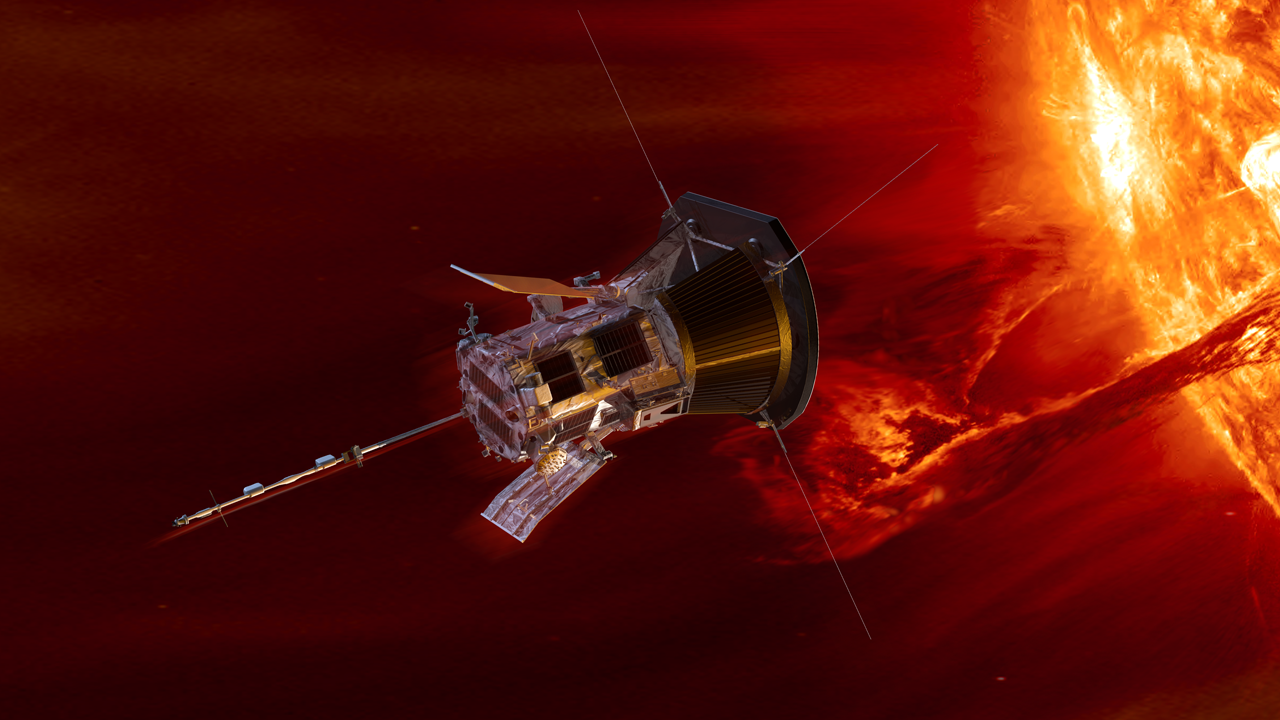August cannot come faster for the Parker Solar Probe team as they prepare for the launch of the spacecraft around August 06, 2018, near Cape Canaveral, Florida. A United Launch Alliance Delta IV Heavy will carry the space probe that is going to be the first man-made object to be studying the Sun this close.
Nicky Fox, project scientist of the Parker Solar Probe at the John Hopkins University Applied Physics Lab in Laurel, Maryland, and Alex Young, associate director of science in the Heliophysics Science Division at the Goddard Space Flight Center in Greenbelt, Maryland, presented the science goals of the Solar Probe and the technology used for making the spacecraft at a televised press conference on July 20, 2018 from the Kennedy Space Center in Cape Canaveral, Florida.
While it appears mostly as a shiny disk to humans on Earth, the Sun plays a far more important role. The giant star’s atmosphere sends magnetized matter out in the solar system and far beyond, influencing every world that is enveloped by it. Solar flares are random bursts of magnetic energy on the Sun’s surface and can cause temporary disruptions in the earth’s weather, satellites and communication signals.
To properly understand the origins of space weather, which is the influence of the Sun’s activity on Earth and other systems, we have to study the Sun first. “We’ve been studying the Sun for decades, and now we’re finally going to go where the action is,” said Young.
“The Sun’s energy is always flowing past our world. And even though the solar wind is invisible, we can see it encircling the poles as the aurora, which are beautiful – but reveal the enormous amount of energy and particles that cascade into our atmosphere”, added Fox. “We don’t have a strong understanding of the mechanisms that drive that wind toward us, and that’s what we’re heading out to discover.”

The Parker Solar Probe will be focusing on studying more about the acceleration of the solar wind, which is the Sun’s continuous outflow of matter. While scientists do know how the solar wind originated, what they don’t know is about the point from where the solar wind gets accelerated to supersonic speeds.
The Solar Probe’s instruments will also be trying to reveal the mechanisms behind Solar Flares, since random solar flares can cause disruption in the Earth’s satellite networks.
To make sure that the Parker Solar Probe can answer all these questions, it is equipped with four state-of-the-art suite of instruments. The FIELDS suite- which will be capturing the turbulence in the inner heliosphere of the Sun. The WISPR instrument- the spacecraft’s sole imaging instrument. The SWEAP suite- short for Solar Wind Electrons Alphas and Protons Investigation will help scientists understand solar wind and coronal plasma better. Finally the IS? suite- the Integrated Science Investigation suite- will measure particles like electrons, protons, and ions to understand the origin of these particles and their lifecycles.
Source: NASA/Goddard Space Flight Center
To know more about the Parker Space Probe’s Science Briefing and visual resources, visit https://svs.gsfc.nasa.gov/13003

